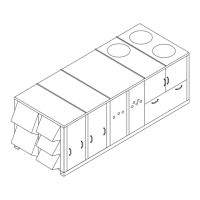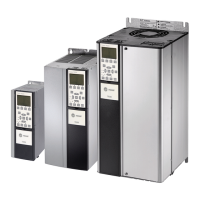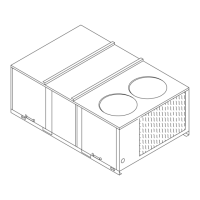138 RT-SVX34C-EN
Diagnostics
Test 5
Testing the VFD
1. Verify that the keypad in control box is powered. If not, check the power wires to the VFD and
the Keypad cable.
2. Using the "Step Test Mode", procedure described in the "Unit Startup" section (Step 3 for VAV).
Verify that the fan starts and the speed increases until the SA Pressure reaches the "Setpoint"
on VAV Setpoint panel. If the fan does not start, check for "Fault Conditions" on the VFD Keypad.
3. If no "Fault Conditions" exist and the fan started but did not ramp up to speed, verify the "speed
reference voltage" output from the RTAM between terminals J4-1 and J4-2.
4. If no "Fault Conditions" exist and the fan did not start, verify that the Fan relay is energized and
the VFD "Start Command" is properly wired from the Fan relay, (24 volts on the Logic Input 2
(LI2) terminal). Verify that the jumper between +24V and the LI1 terminal is properly connected.
5. Verify that 115 VAC is present from the transformer on the VFD assembly panel.
Begin troubleshooting by checking for any diagnostics. See System Status/Diagnostics. Always
verify the unit is operating in the proper "MODE" when troubleshooting.
Compressor—Blink Codes
The CSHN*** large commercial compressors come equipped with a compressor protection device
capable of detecting phase reversal, phase loss, and phase unbalance. The compressor protection
device uses a Green and Red LED to indicate the compressor status. A solid green LED denotes a
fault-free condition; a blinking red LED indicates an identifiable fault condition.
Note: If the compressor has tripped, the resistance will be 4500 ohms or greater; when reset, they
will be less than 2750 ohms.
Blink Code: The blink code consists of different on / off times of the Red LED which is repeated
continuously until either the fault is cleared or until power is cycled.
Fault LED on LED off LED on LED off
PTC overheat or PTC reset
delay active
short blink long blink short blink long blink
Phase loss long blink long blink long blink long blink
Incorrect phase sequence short blink short blink short blink long blink

